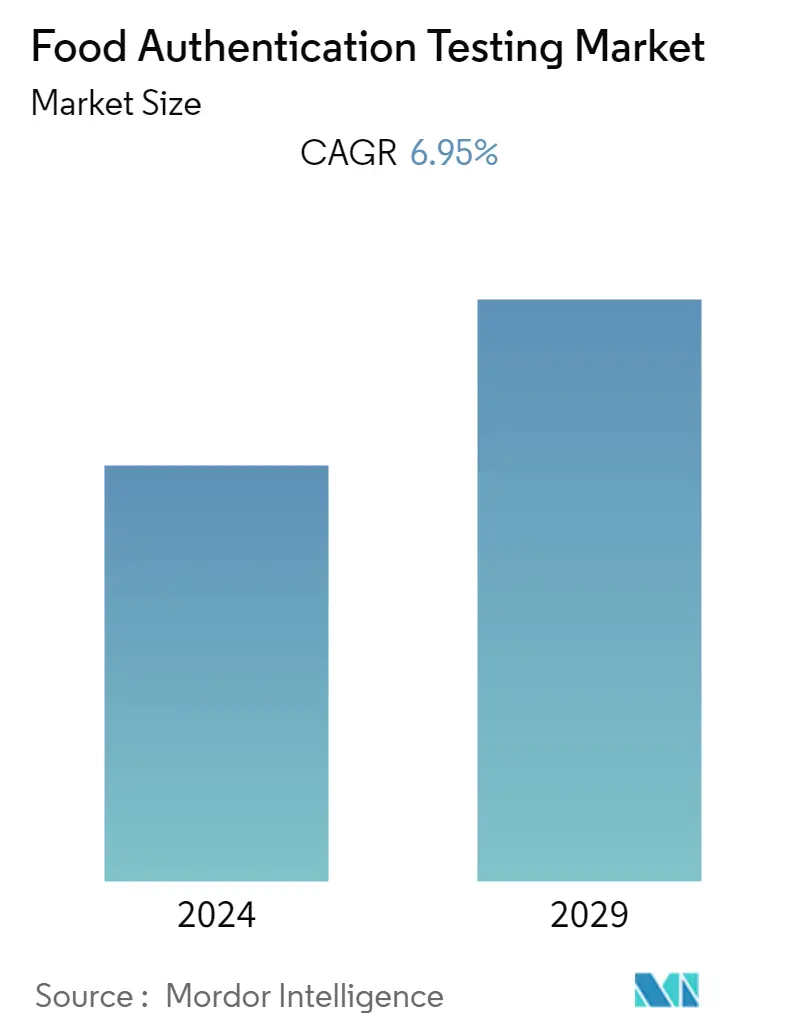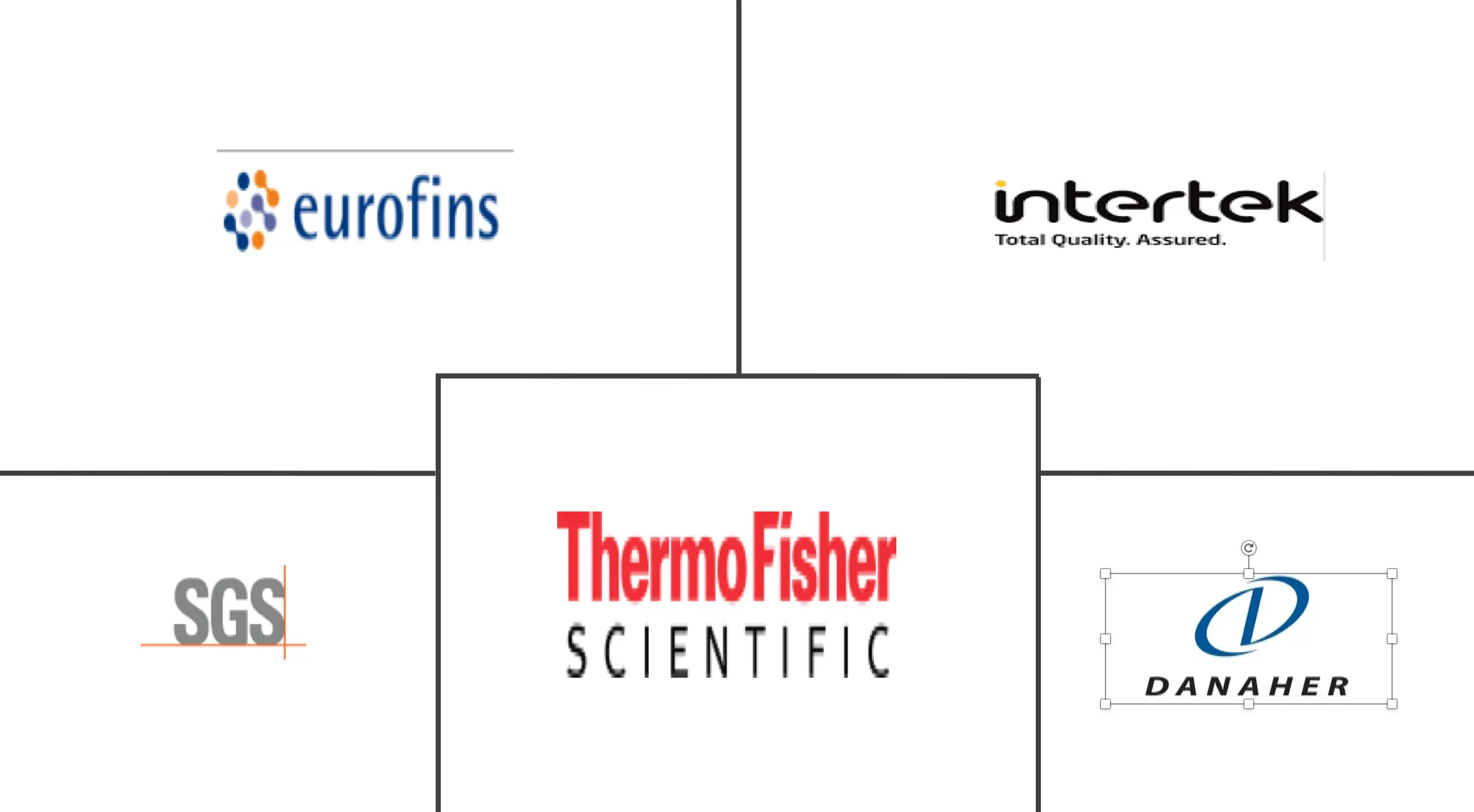Market Size of Food Authentication Testing Industry

| Study Period | 2019 - 2029 |
| Base Year For Estimation | 2023 |
| CAGR | 6.95 % |
| Fastest Growing Market | Asia Pacific |
| Largest Market | Europe |
| Market Concentration | High |
Major Players
*Disclaimer: Major Players sorted in no particular order |
Need a report that reflects how COVID-19 has impacted this market and its growth?
Food Authenticity Testing Market Analysis
The global food authentication testing market (henceforth, referred to as the market studied) is projected to register a CAGR of 6.95% during the forecast period, 2021 - 2026.
With the consumer aiming to purchase more authentic, healthy and branded food products during the COVID-19 period, due to the risk of COVID-19 and other viruses in them, therefore the application of services such as food authentication, had further propelled in the year 2020 as compared to other previous years.
Amid the growing prevalence of food fraud in the industry, including the deliberate substitution of ingredients, misleading consumers with false claims, and disruptive labeling, consumers have become skeptical about the authentication of food products meant to serve specific demands, such as vegan, free-form, organic, and others. This, in turn, has led the food manufacturers to opt for food authentication techniques as the most effective way to differentiate their products from conventional offerings, to capture substantial shares in the market.
However, the complexity to maintain the authenticity of the end product, considering identification and management from each stakeholder of the supply chain, makes the food manufacturers opt-out of authentication testing. Moreover, testing, primarily being a voluntary adoption, is perceived to be an extra expense for small manufacturers of the developing regions, like Asia-Pacific and Africa. The testing method poses a budget constraint for the food companies, further posing a restraint to the market.
